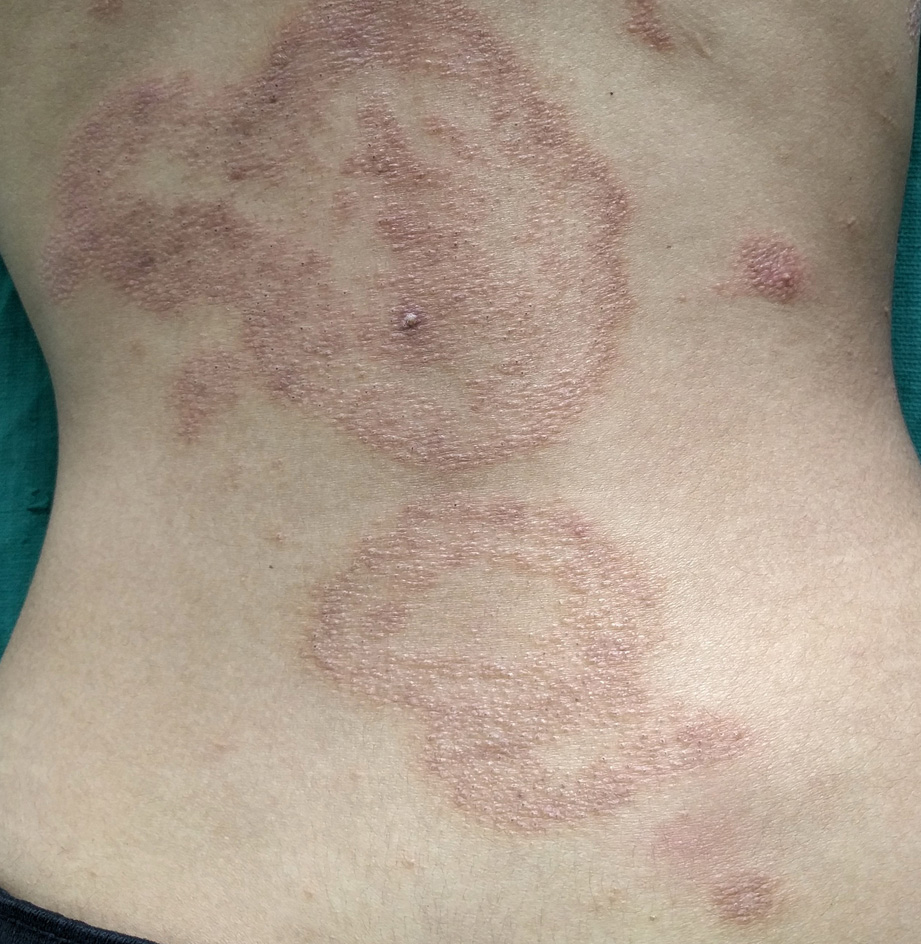Lichen scrofulosorum in an 18-year-old patient.

Downloads
DOI:
https://doi.org/10.26326/2281-9649.31.3.2272How to Cite
Abstract
Tuberculides are cutaneous hypersensitive reactions triggered by M. tuberculosis or its antigens. The concept of tuberculides was first given by Darier in 1896 (1). The diagnosis of tuberculides is difficult and depends on the features as follows (3): a strongly positive tuberculin test, tuberculoid histology on skin biopsy, absence of M. tuberculosis in the smear, negative culture, and resolution of the skin lesions with anti-tubercular therapy.
Lichen scrofulosorum is a rare entity and it presents with minute, skin colored, and grouped papules, usually seen in annular arrangement on the trunk. Differential diagnosis should consider lichenoid sarcoidosis, keratosis pilaris, keratosis spinulosa, papular secondary syphilis and pityriasis rubra pilaris. Histopathology shows in the upper dermis epitheloid granulomas with few, occasionally found giant cells.
Extensive screening is required in these patients to rule out extra cutaneous TB infection (2). However, up to 30% of patients may have no obvious underlying focus of tuberculosis (3).
Tuberculides are uncommon reactive cutaneous manifestation of M. tuberculosis that can be misdiagnosed easily. So a vigilant physical examination and a prompt diagnosis is important for individual prognosis and initiation of appropriate treatment to halt the disease progression.
